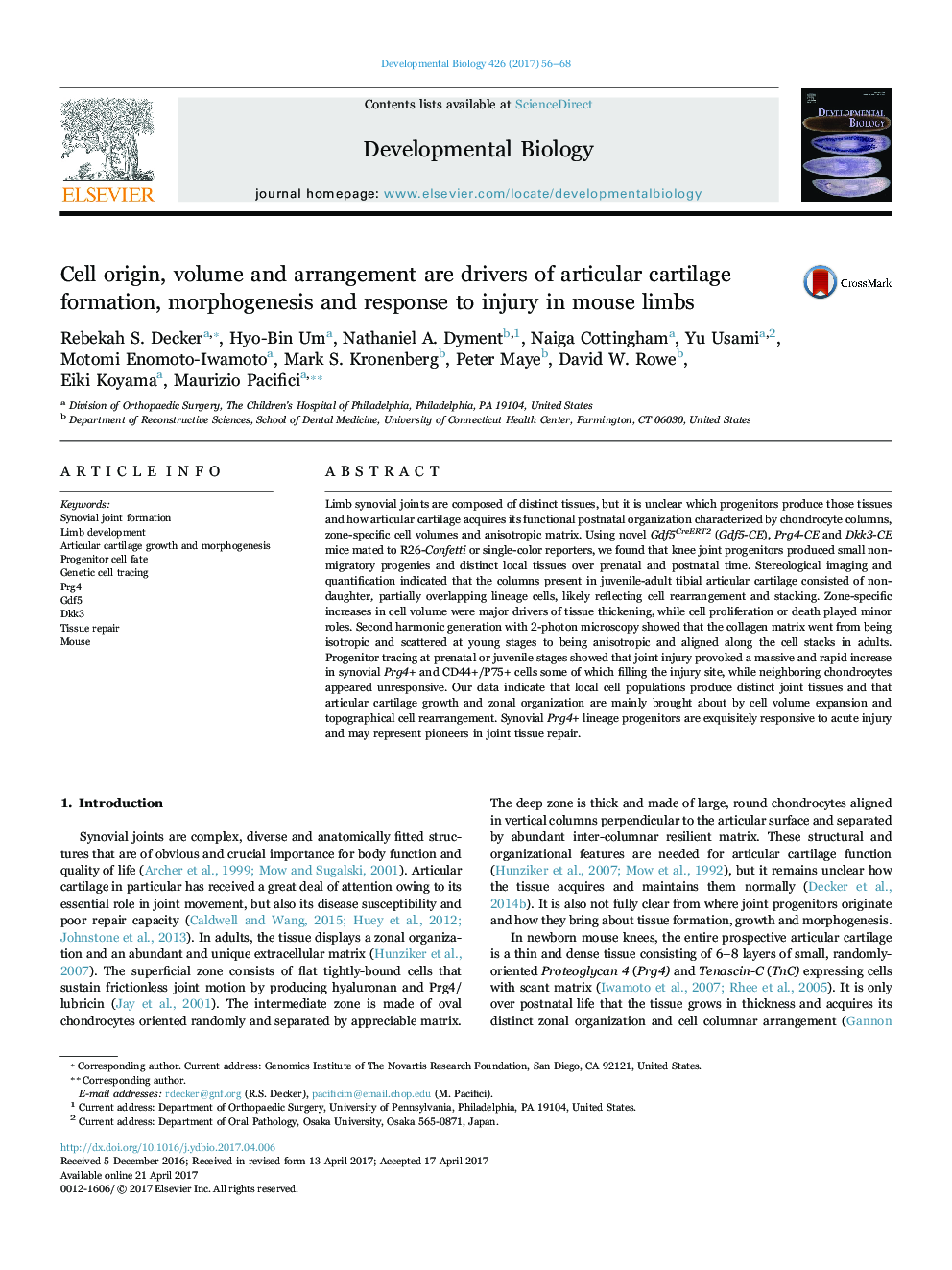| کد مقاله | کد نشریه | سال انتشار | مقاله انگلیسی | نسخه تمام متن |
|---|---|---|---|---|
| 5531712 | 1401809 | 2017 | 13 صفحه PDF | دانلود رایگان |
- Local progenitor cells emerging at distinct sites and times give rise to distinct joint tissues.
- Articular cartilage zonal structure mainly reflects cell rearrangement into stacks.
- Postnatal cartilage thickening is driven by zonal-specific increases in cell volume.
- Synovial progenitors with a Prg4 lineage signature appear exquisitely responsive to tissue injury.
Limb synovial joints are composed of distinct tissues, but it is unclear which progenitors produce those tissues and how articular cartilage acquires its functional postnatal organization characterized by chondrocyte columns, zone-specific cell volumes and anisotropic matrix. Using novel Gdf5CreERT2 (Gdf5-CE), Prg4-CE and Dkk3-CE mice mated to R26-Confetti or single-color reporters, we found that knee joint progenitors produced small non-migratory progenies and distinct local tissues over prenatal and postnatal time. Stereological imaging and quantification indicated that the columns present in juvenile-adult tibial articular cartilage consisted of non-daughter, partially overlapping lineage cells, likely reflecting cell rearrangement and stacking. Zone-specific increases in cell volume were major drivers of tissue thickening, while cell proliferation or death played minor roles. Second harmonic generation with 2-photon microscopy showed that the collagen matrix went from being isotropic and scattered at young stages to being anisotropic and aligned along the cell stacks in adults. Progenitor tracing at prenatal or juvenile stages showed that joint injury provoked a massive and rapid increase in synovial Prg4+ and CD44+/P75+ cells some of which filling the injury site, while neighboring chondrocytes appeared unresponsive. Our data indicate that local cell populations produce distinct joint tissues and that articular cartilage growth and zonal organization are mainly brought about by cell volume expansion and topographical cell rearrangement. Synovial Prg4+ lineage progenitors are exquisitely responsive to acute injury and may represent pioneers in joint tissue repair.
Journal: Developmental Biology - Volume 426, Issue 1, 1 June 2017, Pages 56-68
